Key takeaways
- Quine’s Web of Belief illustrates the interconnectedness of beliefs, emphasizing that challenging one idea can lead to re-examining many others.
- This philosophy fosters intellectual humility and adaptability, encouraging learners to embrace change and uncertainty in their thought processes.
- Incorporating this approach in education transforms learning from rote memorization to an engaging exploration of ideas, promoting critical thinking and curiosity.
- Future philosophy teaching could leverage technology to visualize belief connections, enhancing understanding and comfort in revising one’s views.
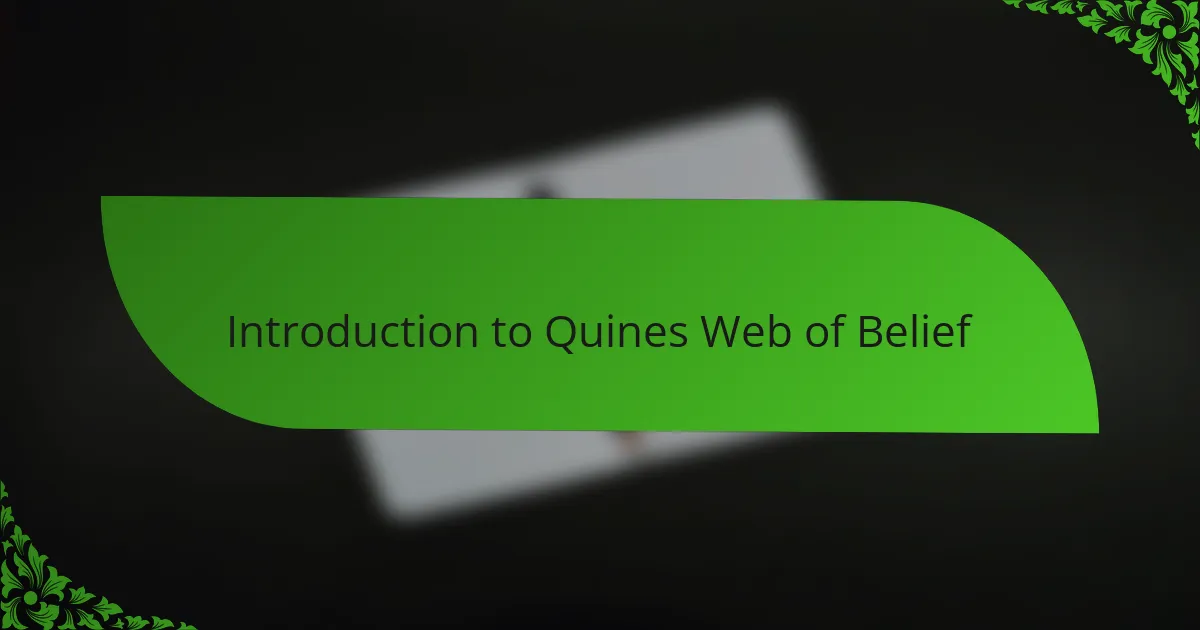
Introduction to Quines Web of Belief
Quine’s Web of Belief is a fascinating way to think about how our beliefs connect and support each other. I remember first encountering this idea and feeling both intrigued and challenged—it’s like realizing that the truths we hold aren’t isolated facts but part of a complex network.
Have you ever wondered how changing one belief can shift others around it? Quine suggests that our knowledge is not built piece by piece but woven together, where a single thread’s tug can ripple through the entire fabric. This perspective made me reconsider how often I accept ideas without thinking about their interdependence.
What strikes me most about Quine’s concept is how it captures the fluidity of our understanding. I find it deeply human—it acknowledges that belief is not static but adaptable, reflecting how real learning and growth happen in everyday life.
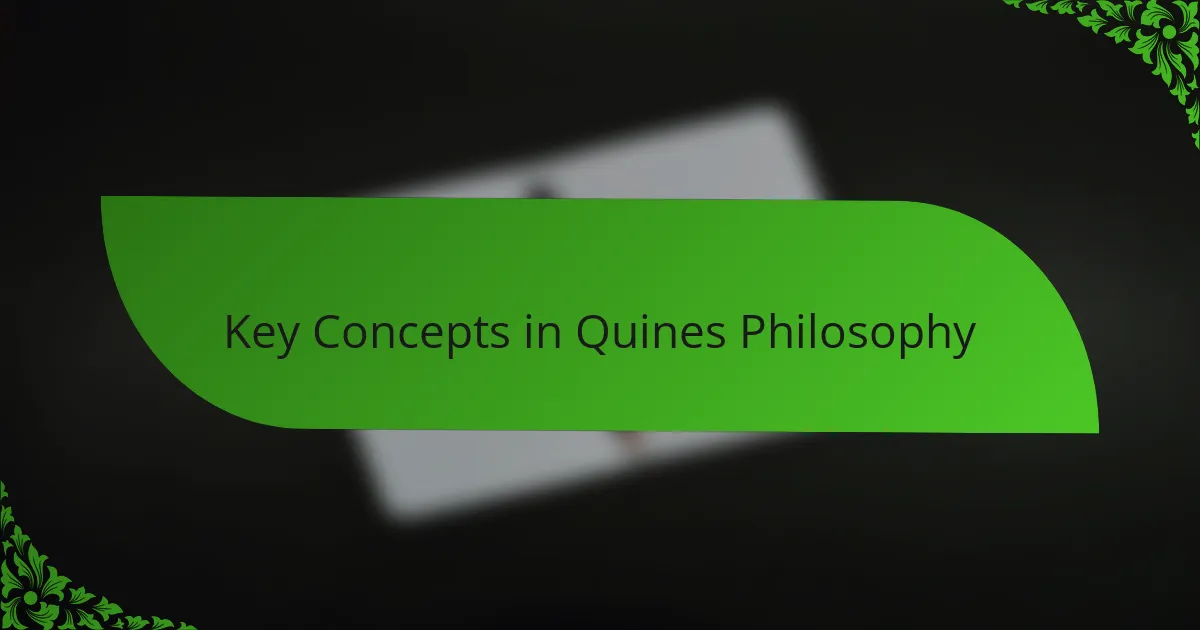
Key Concepts in Quines Philosophy
One of the key ideas in Quine’s philosophy is that no belief stands alone; each one is interconnected, forming a vast “web.” When I first grasped this, it felt like looking at a spider’s intricate creation—a delicate balance where pulling one strand affects many others. It made me think: how often do I assume my beliefs are fixed, when in reality, they’re constantly shifting?
Another concept that caught my attention is Quine’s challenge to the idea of absolute foundations in knowledge. He argues that even the most basic statements rely on other beliefs to stay intact. This view pushed me to question what I consider to be firmly true—and it can be both unsettling and liberating to recognize that certainty is often an illusion.
Quine also highlights that this web isn’t just a static structure; it’s a dynamic system open to revision at any point. I’ve experienced this personally when new information caused me to rethink not just one idea, but a cluster of related ones. It made me appreciate how flexible our minds are in adapting to new realities, a reminder that learning is an ongoing, interconnected process.
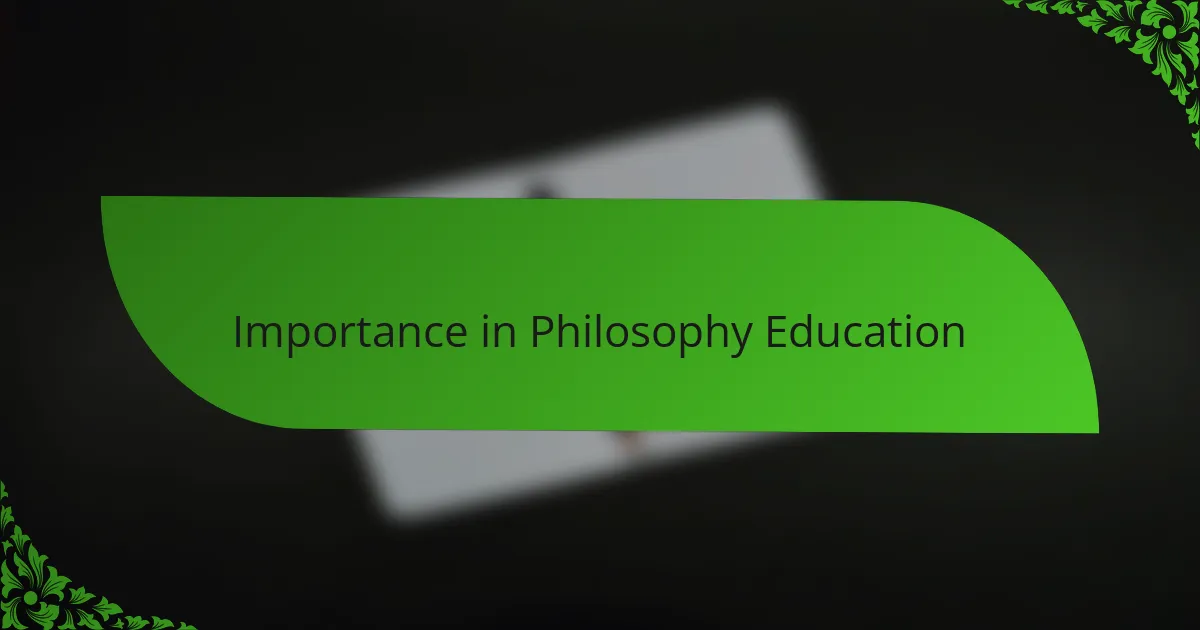
Importance in Philosophy Education
Thinking about why Quine’s Web of Belief matters in philosophy education, I believe it changes how we approach learning itself. Instead of memorizing isolated facts, we start seeing knowledge as a living network. This shift helped me realize that challenging one idea means re-examining many others, making philosophy feel more like an adventure than a static subject.
Have you noticed how traditional education often treats ideas like building blocks stacked neatly? Quine’s approach made me question this; it’s more like a web where every strand supports the others. This perspective not only deepened my understanding of philosophy but also made critical thinking more authentic and engaging.
What I find most valuable for students is that embracing the web encourages openness to change. When I accepted that no belief is sacred and everything can be revised, it freed me from the fear of being wrong. This mindset, I believe, is essential in philosophy education—it cultivates intellectual humility and a genuine curiosity to explore ideas without clinging to certainties.

Practical Applications in Learning
When applying Quine’s Web of Belief to learning, I often think about how this interconnectedness helps me see the bigger picture. Have you ever noticed that understanding one concept often clears up confusion in another seemingly unrelated area? That’s the web at work, showing me how pulling on one idea strengthens my grasp on many others.
In my experience, this approach transforms studying from rote memorization to active exploration. When I challenge one belief, I’m naturally led to revisit related ideas, which deepens my comprehension far more than isolated facts ever could. It’s like weaving knowledge into a fabric that becomes stronger and more flexible the more I work with it.
What’s truly powerful is how embracing this web reduces the fear of making mistakes. When I accept that beliefs are part of a dynamic network open to revision, I find it easier to admit gaps in my understanding and learn from them. This shift made learning feel less intimidating and more like an ongoing conversation with myself and others.

Personal Insights and Experiences
I recall a time when a single contradictory piece of information made me question not just one belief but a whole cluster of ideas I’d held for years. It felt unsettling at first, almost like my intellectual ground was shifting beneath me. Yet, reflecting on Quine’s Web of Belief helped me see this upheaval not as a threat but as a sign of growth—proof that my thoughts are interconnected and alive.
Have you ever experienced that moment when changing one viewpoint unexpectedly opened doors to new understandings? For me, this has happened repeatedly, showing how flexible our minds truly are if we allow ourselves to revisit and revise what we hold true. Quine’s insight into this fluidity helped me embrace uncertainty with curiosity rather than fear.
Sometimes, I find myself marveling at how this web mirrors real life. Just as we navigate relationships and emotions that shape each other, so too do our beliefs weave together in complex ways. Recognizing this makes philosophy feel less like abstract theory and more like a deeply personal, ongoing journey.
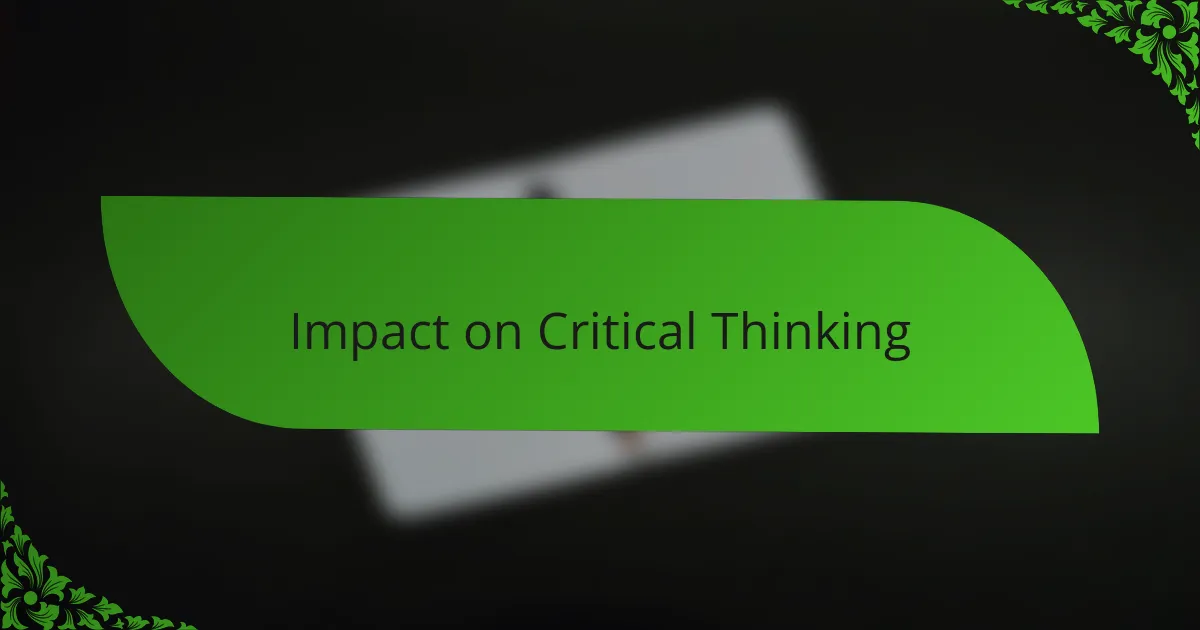
Impact on Critical Thinking
I find that Quine’s Web of Belief sharpens critical thinking by making me aware of how deeply interconnected my ideas are. When I challenge one belief, it’s impossible not to see how many others might shift—that ripple effect forces me to think more carefully and holistically.
Have you ever caught yourself stubbornly defending a single idea, only to realize it rests on shaky grounds once you question related beliefs? For me, this has been a humbling lesson in intellectual humility. Quine’s framework encourages stepping back and embracing the complexity rather than clinging to isolated certainties.
What I appreciate most is how this perspective turns critical thinking into an ongoing conversation with myself. Instead of aiming for absolute answers, I’m constantly weaving and reweaving my understanding, learning to accept uncertainty as part of the process rather than a failure. This mindset has made me both a better thinker and a more open learner.
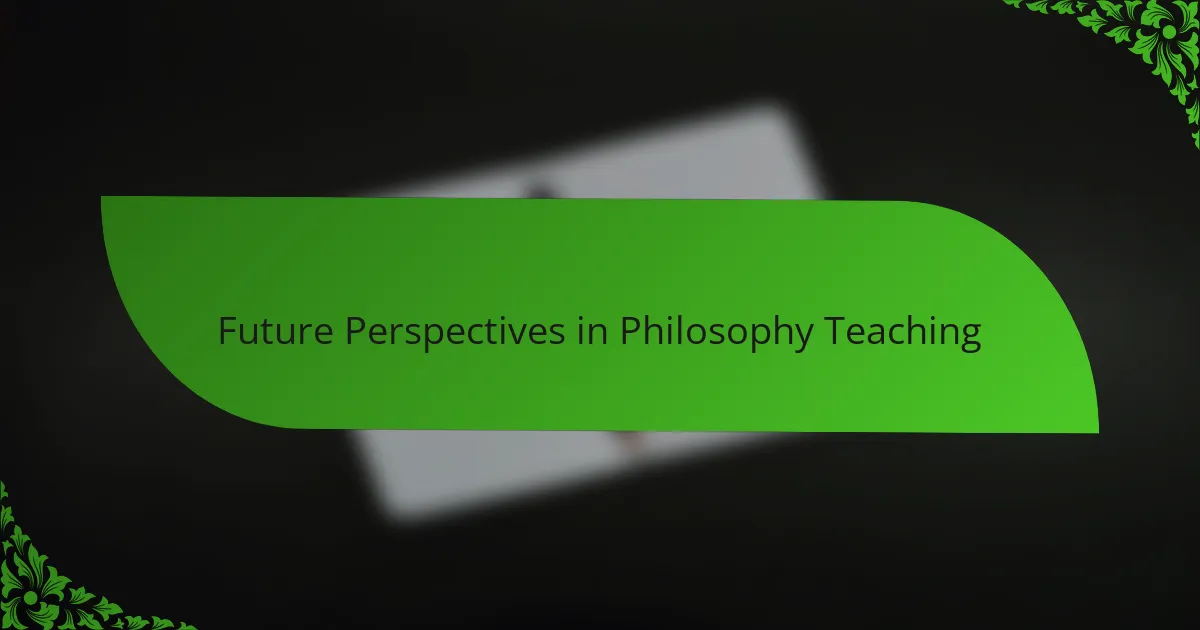
Future Perspectives in Philosophy Teaching
Looking ahead, I see philosophy teaching embracing Quine’s idea of a belief web more fully by encouraging students to navigate knowledge as an interconnected system rather than isolated facts. Imagine classrooms where questioning one idea naturally leads to exploring its links to others, making learning a vibrant and dynamic process. This shift could make philosophy feel less intimidating and more like an unfolding conversation—something I’ve found truly liberating in my own studies.
I wonder how technology might support this web-based learning in the future. Tools that map ideas visually or connect students’ reflections could bring Quine’s concept to life, helping everyone see how their thoughts interlock and evolve. From my experience, when you can literally see the threads, revising beliefs becomes less scary and more like a natural part of intellectual growth.
Ultimately, I think future philosophy teaching will benefit from fostering openness to revision—the heart of Quine’s philosophy. What’s exciting for me is that embracing this flexibility doesn’t just improve understanding; it nurtures curiosity and courage to explore new perspectives without fear. That mindset, I believe, will be the true legacy of applying Quine’s Web of Belief in education.